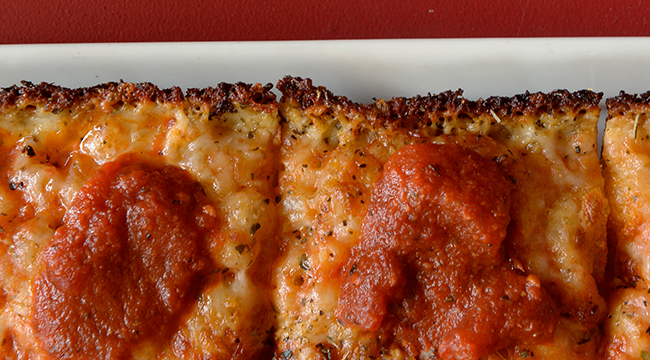
There are a lot of pizza styles out there. For me, they’re all great in their own ways. Only a crazy person would turn down a slice of Giordano’s deep dish or Di Fara’s Brooklyn slice and that’s before you even get into the brilliance of a parlor pie from the Pacific Northwest or the beautiful bounty of pies in Italy. All of those styles aside, the elements remain the same: Yeast-risen flatbread, sauce (usually red), often cheese, varied toppings, baked at high heat. Within those five elements, a galaxy of options emerge. One of my personal favorites is what’s become known as Detroit-style pizza.
Detroit-style is an evolution of Sicilian Sfincione. That’s a thick doughy crust with red sauce, melty cheese, and minimal toppings. You’ll find this pizza in bakeries all over Sicily to this day. You’ll see Sicilian nonnas behind old granite counters, stretching dough in huge, well-seasoned baking pans all day long. That tradition migrated across the pond to America. While you can still get Sicilian pies all over the Northeast and Ohio Valley, pizzaiolo’s in Detroit added their own twist and made pizza history. Their tactic was to reverse the order of the toppings while utilizing a well-oiled rectangular baking pan and adding mild Wisconsin cheese to the mix. It may seem like a trivial change to the untrained eye but it’s in the details that all pizza shines brightest.
My recipe for Detroit-style pizza is a bit of marrying of old and new. I live in Europe, so my access to things like mild brick Wisconsin cheese is nill. I do, however, have access to legit Italian tomato and flour. So, I guess you could say I’m making a German/Sicilian Detroit-Style pizza… if you want to be pedantic about it. Or we could just say that I’m making a “Goddamn delicious pie” and be done with it. Either way, Detroit’s pizza is my inspiration. Sicily is my foundation. Let’s jump in!
The Ingredients
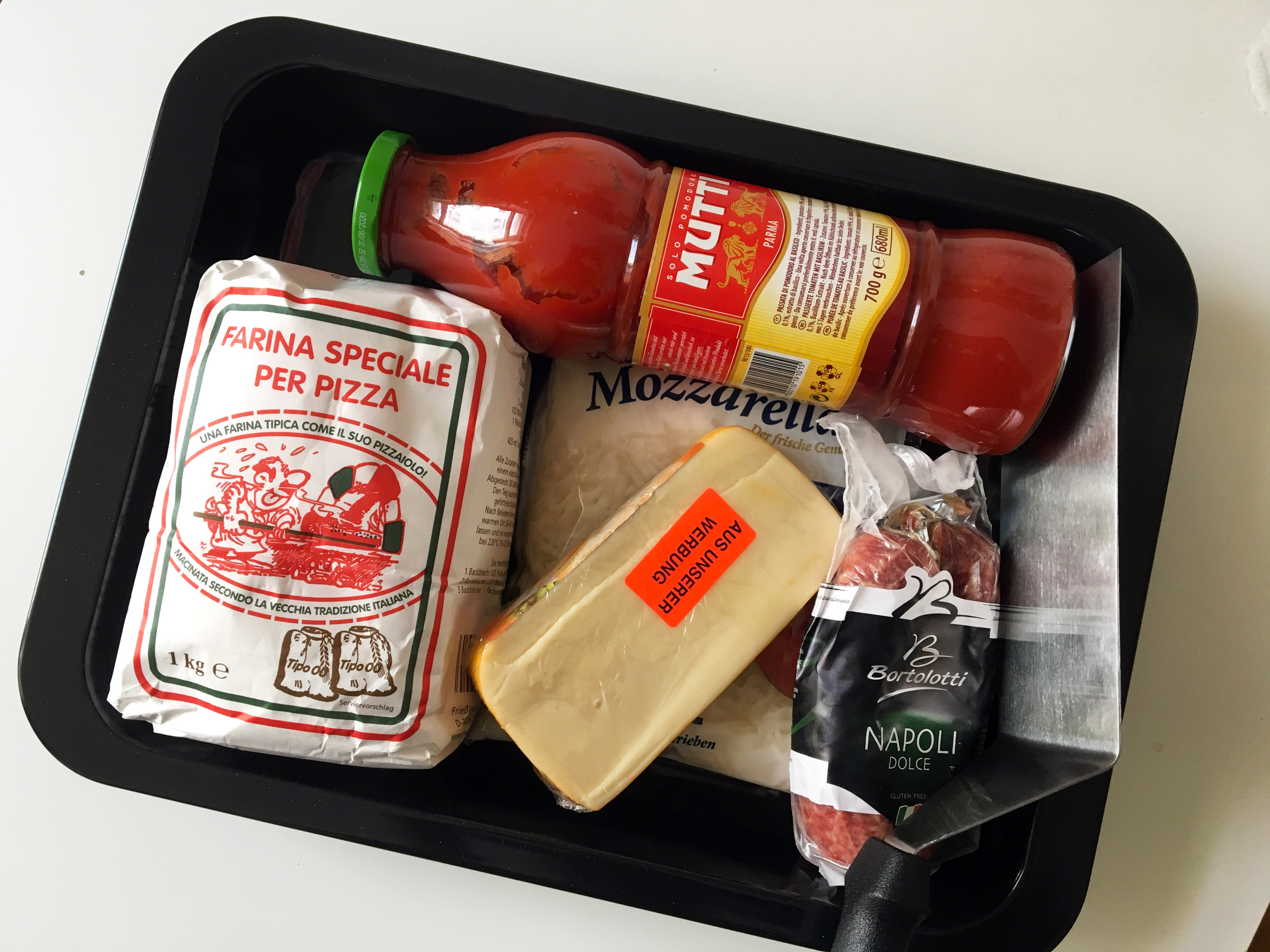
First and foremost, you need a 10×14 inch pan that’s very well seasoned. The pan should have square edges, not rounded; though if they’re rounded it’s not the end of the world.
If your pan isn’t seasoned you’ll need to season it first. Turn your oven to its highest setting. Use a paper towel or food brush to generously apply olive oil to the entire inside of the pan. It should form a clear layer all over without any streaking or gaps. Throw it in the oven until it starts to smoke and the oil is no longer pooling. Basically, this will form the “seasoning” layer so that nothing will stick to the aluminum surface. Also, make sure the pan is dark or black as lighter aluminum will not conduct heat as well when baking.
Next, I gather some Type 00 durum flour, plain tomato puree, hard mozzarella, sliced black olives, and salami from Naples. It’s difficult to find “American” style pepperoni over here and the Neapolitan stuff works fine because it’s delicious in its own right.
To replace the mild brick Wisconsin cheese I’m using a German Butterkase (butter cheese). It has a similar softness and fat content to the Wisconsin brick, making it a very close doppelganger. It’s a little more piquant than the Wisconsin stuff but that just means more cheesy flavor at the end of the day. I also gather red pepper flakes, garlic, garlic powder, salt, dry activated yeast, plenty of olive oil, fresh basil and oregano, raw sugar, and room temp tap water.
The Dough
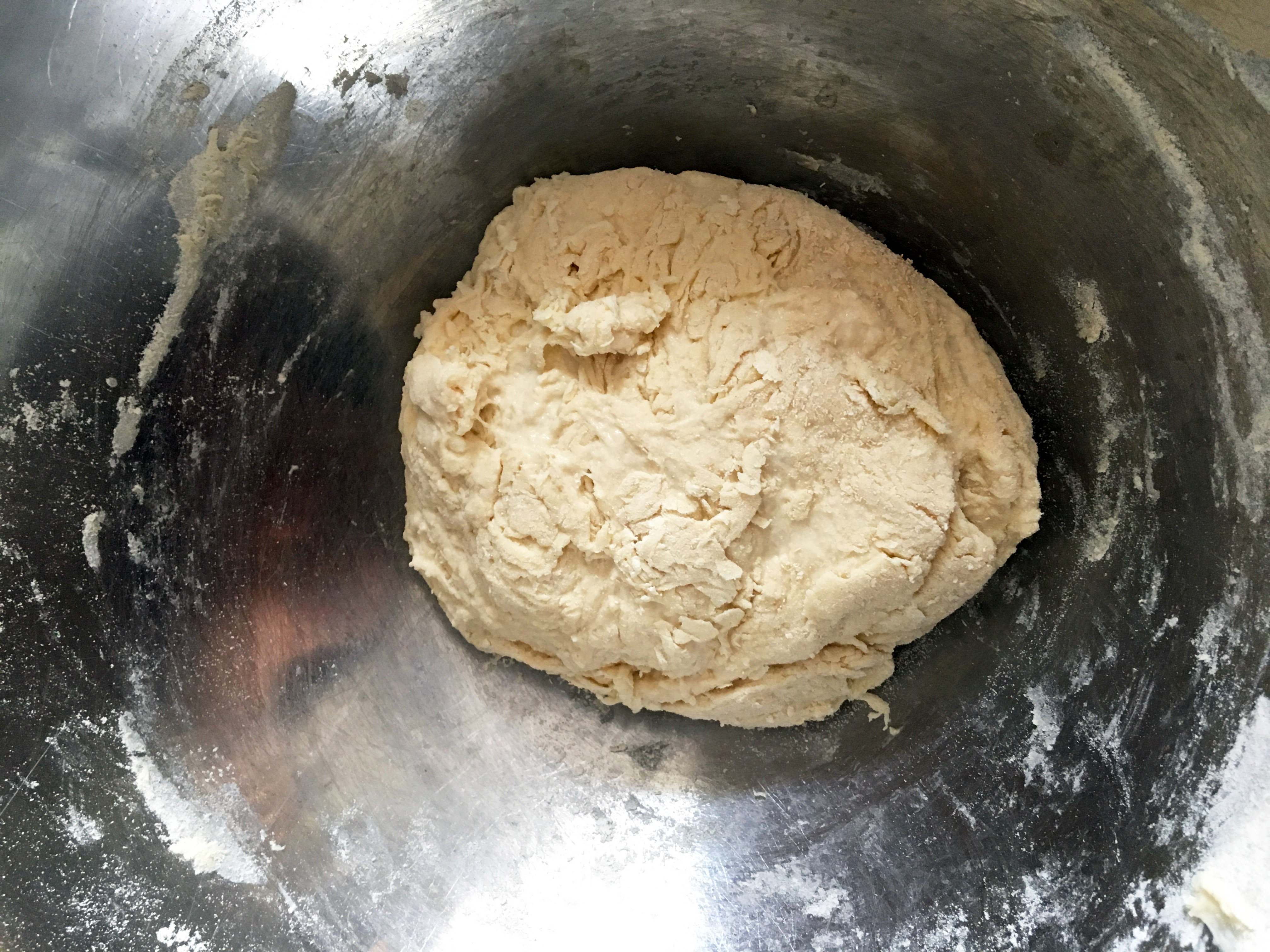
Baking bread is mostly chemistry. That is, precision is paramount to executing the recipe. You really should have a kitchen scale if you want to kill it in the baking game. You can grab one on Amazon right now for about ten bucks.
For a really light-yet-thick Detroit-style dough you’ll need 300g (10.58 ounces) of Type 00 flour, 220g (7.76 ounces) of room temp tap water, 7g (0.246 ounces) dry yeast, 9g (0.317 ounces) fine sea salt, plus extra flour for kneading.
Combine the dry ingredients and whisk with a fork to mingle it all together. Add in your water and mix with a rice paddle or large wooden spoon. Alternatively, you can put all of this in a food processor with a dough paddle — I prefer working bread by hand, but that’s just me.
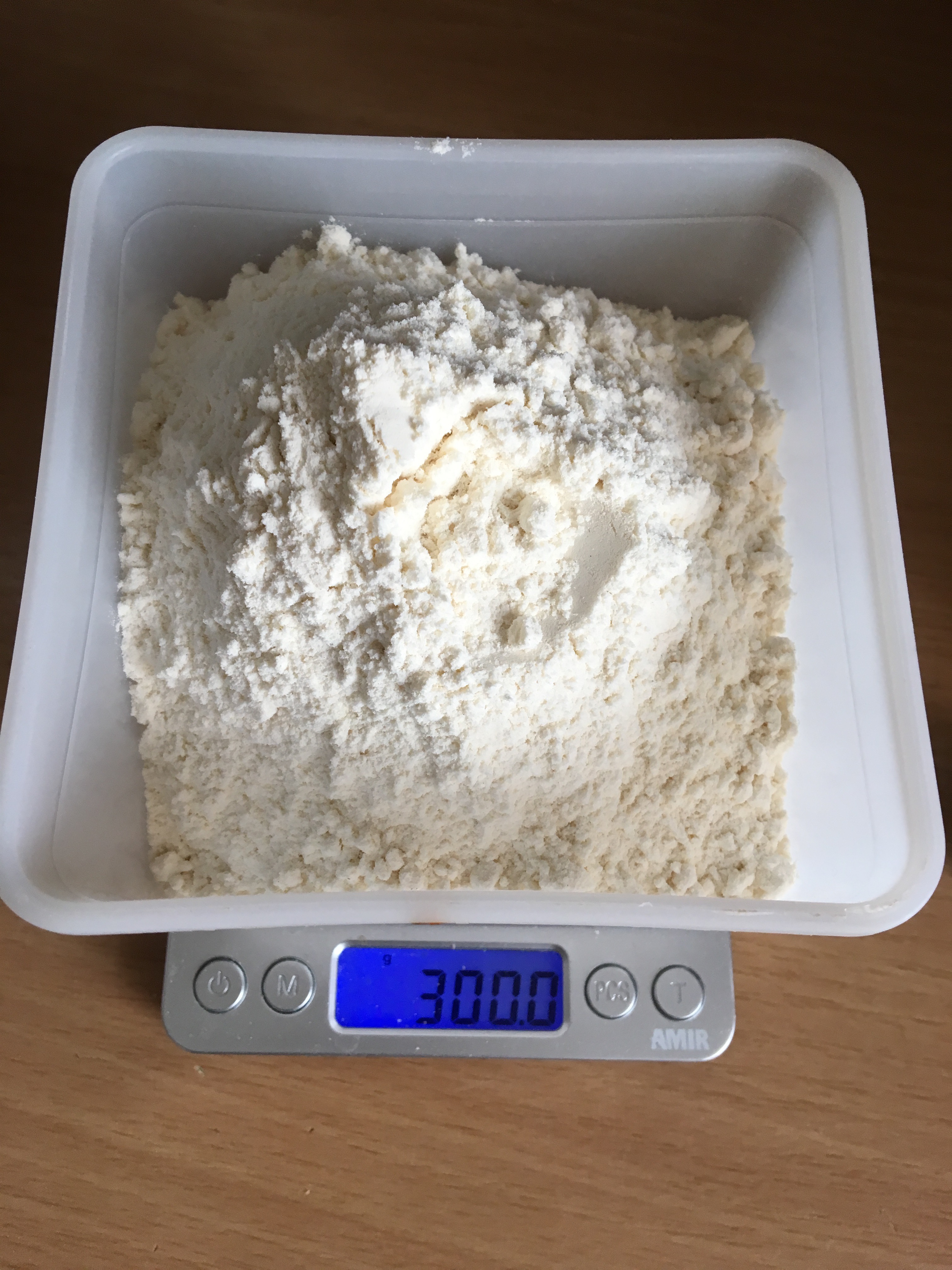
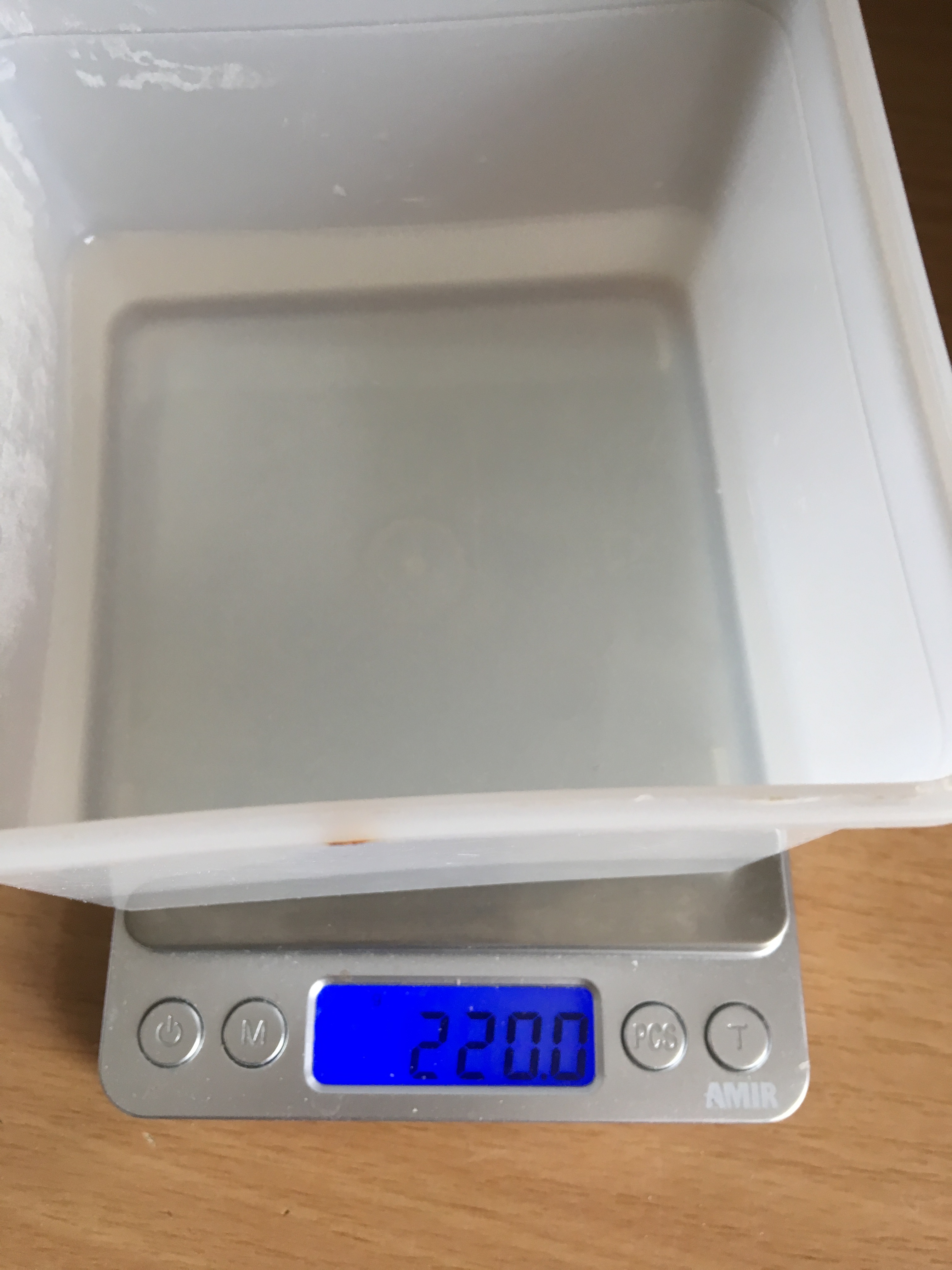
Once a ball has formed that doesn’t stick at all, set the bowl aside and allow the dough to rest for ten minutes. Next, take the dough out and knead it until it’s smooth and doesn’t stick to your kneading surface. This will take up to ten minutes but really depends on how hot it is in your kitchen.
Place the dough ball in a well-oiled bowl to rise. I use olive oil to brush the entire inside of the boil with a thin layer. Place a sheet of plastic wrap over the bowl and set aside for up to two hours to rise. You’ll know the dough is ready when it starts to touch the plastic wrap.
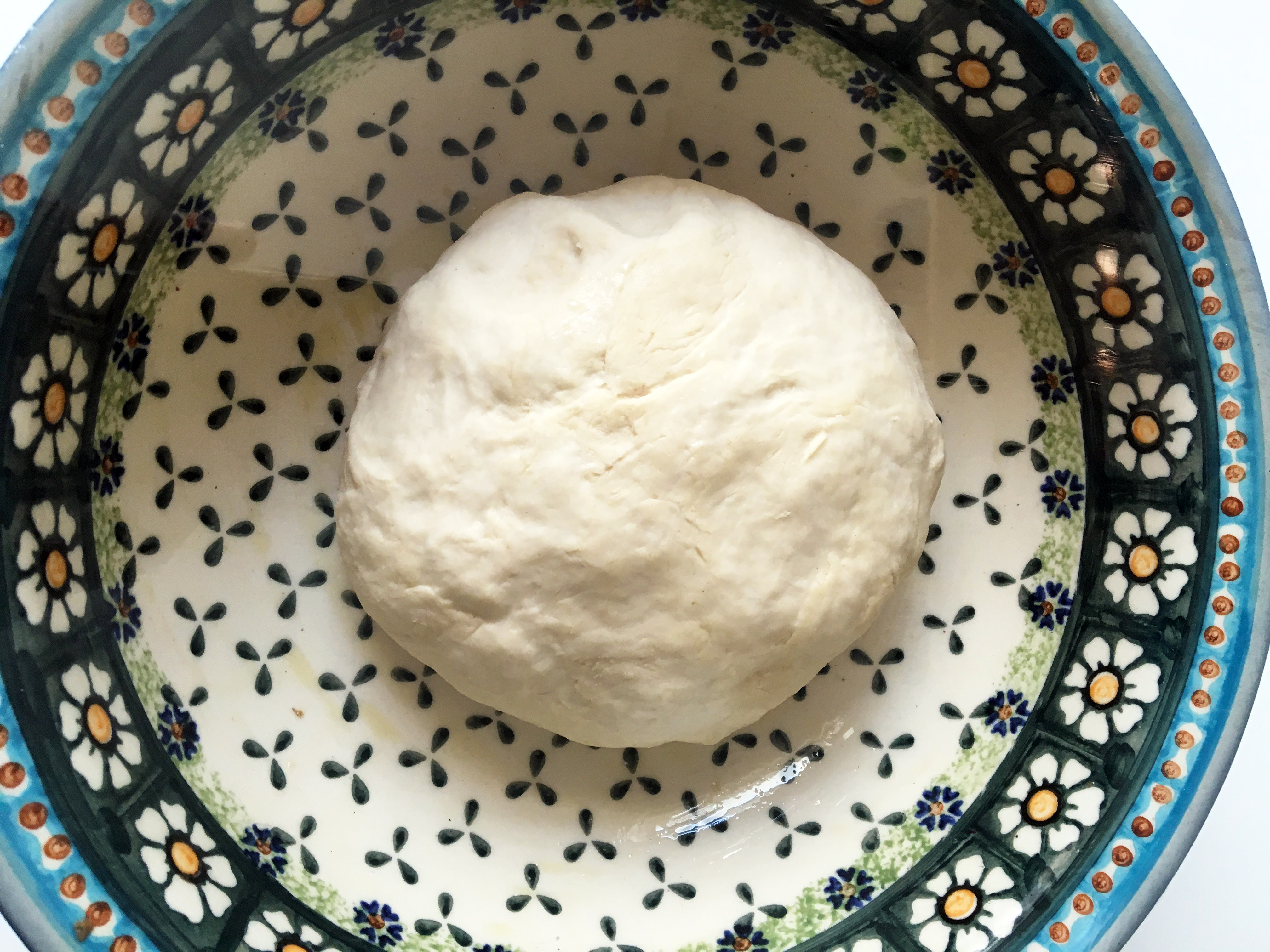
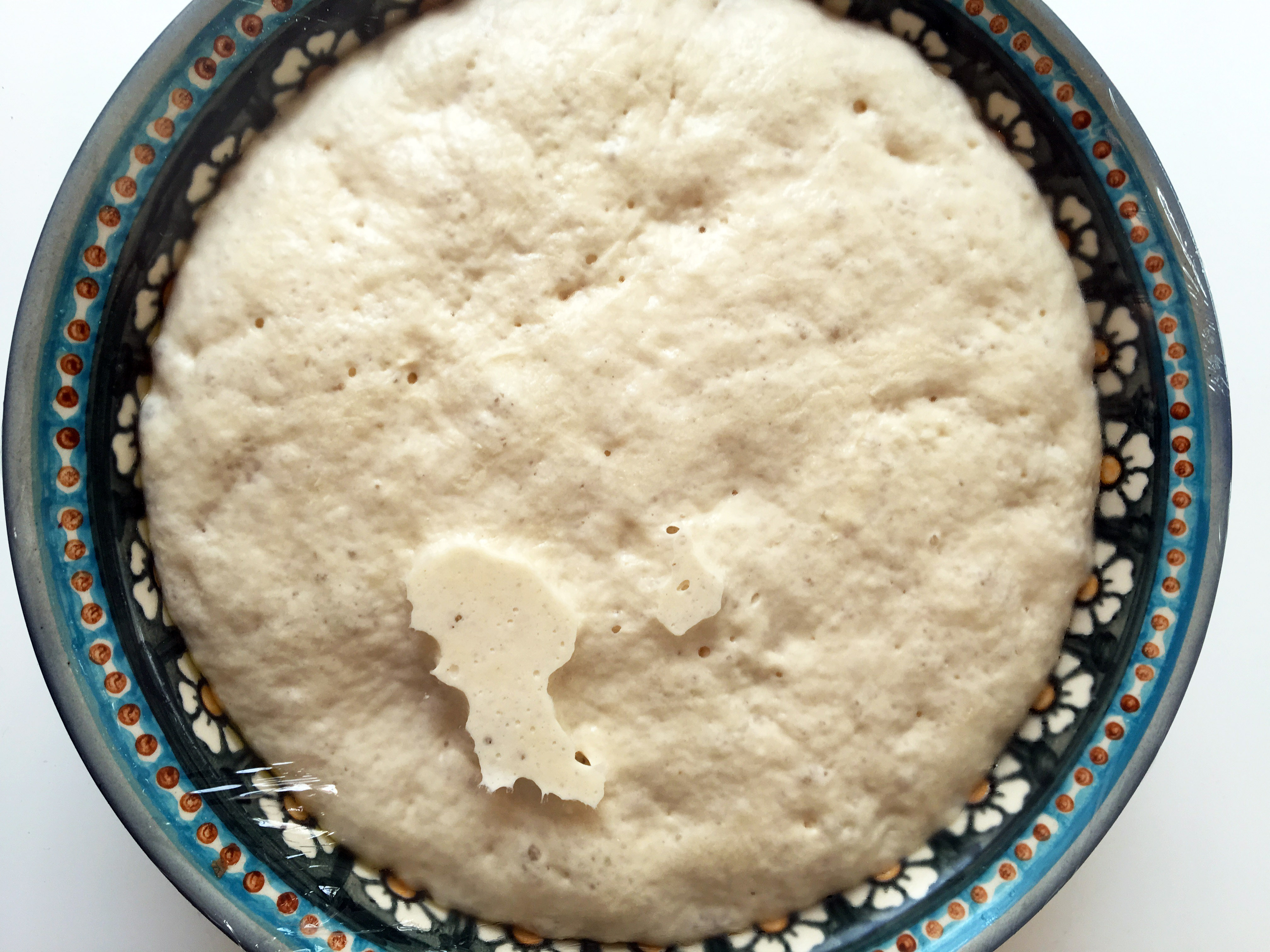
Get your pan ready by generously oiling it with a brush. You want to create a thick layer here. The oil is going to help make that amazingly crispy crust along with the cheese.
Gather up the dough into a ball and put it in the pan. Start gently stretching the dough towards the corners, making sure never to let the dough tear. Turn the dough over and continue gently stretching. You likely won’t be able to get the dough to the edges of the pan. That’s okay! You don’t want it to yet. Cover the pan with plastic wrap and set aside to proof. This will take no more than 30 minutes as the dough inches towards the edges of the pan all by itself.
Once the dough is near the corners, remove the plastic wrap and gently nudge the dough to the edges so that the pan has a full layer without gaps. Done.
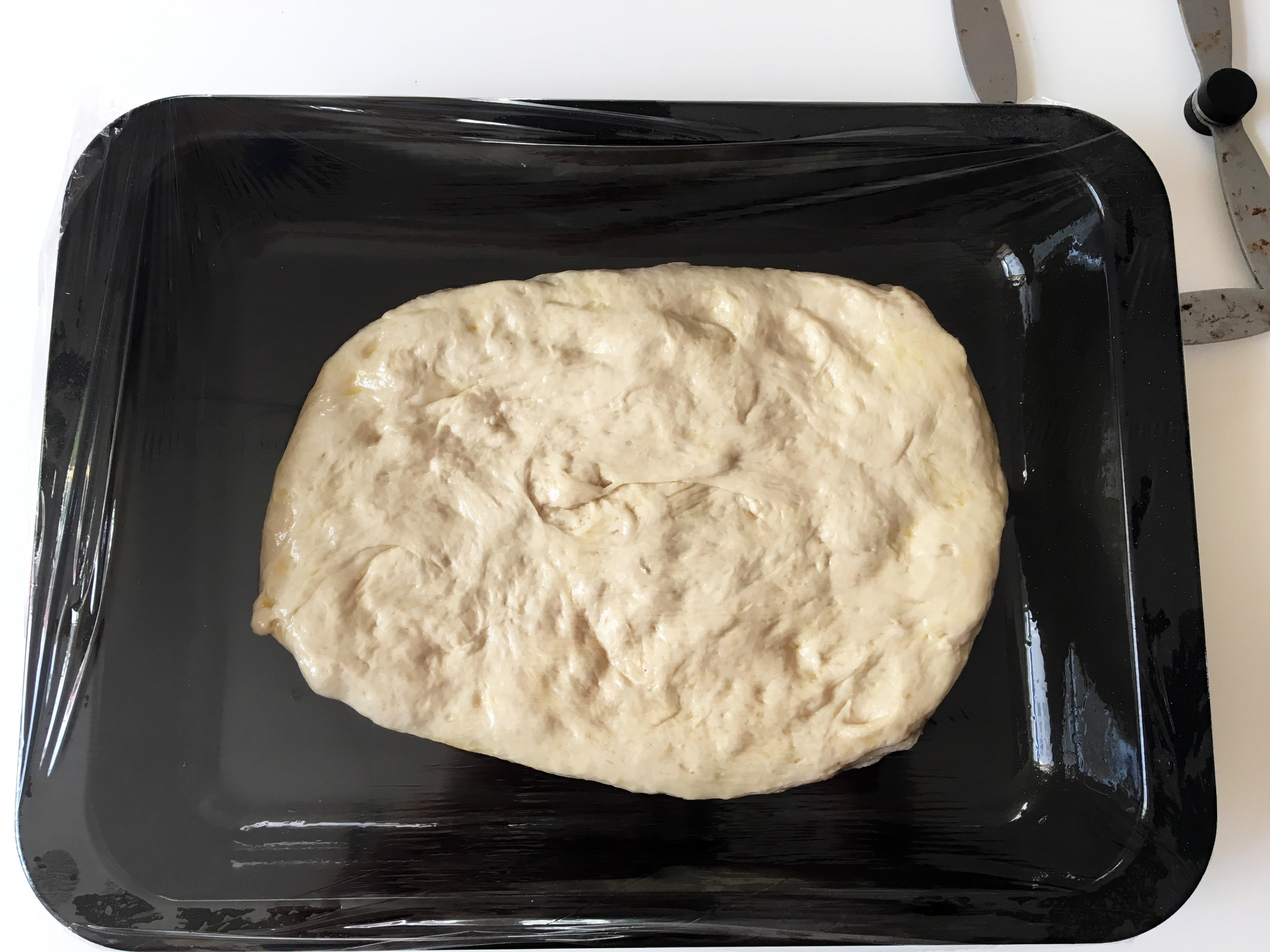
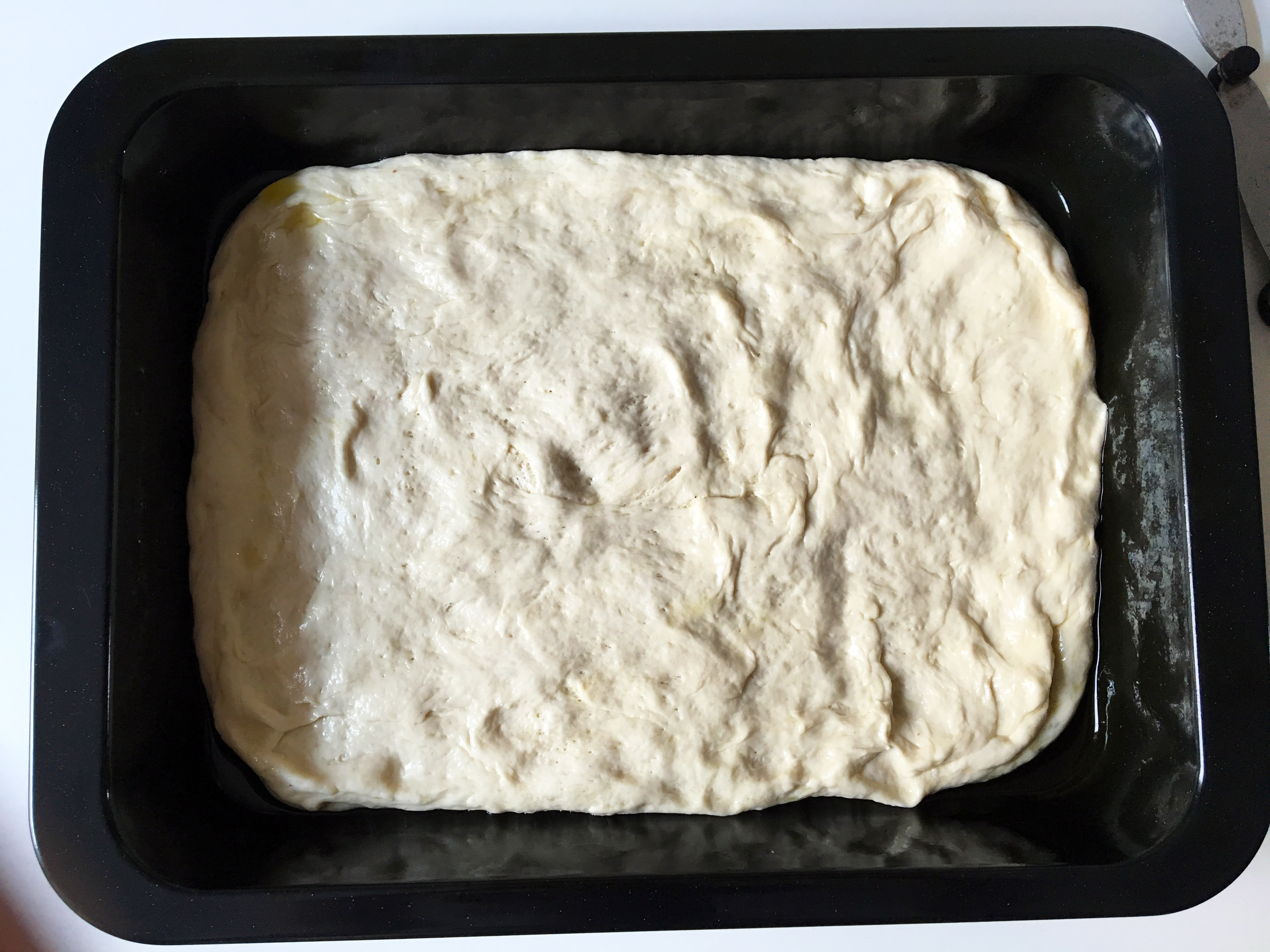
The dough you’re left with will have a slight yeasty funk to it with a really soft and airy chew. The outer layer will be crisp and crunchy thanks to the oil and cheese. It’s a textural delight that’s pretty addictive. Remeber to have a little patience and you can crush this aspect of the recipe.
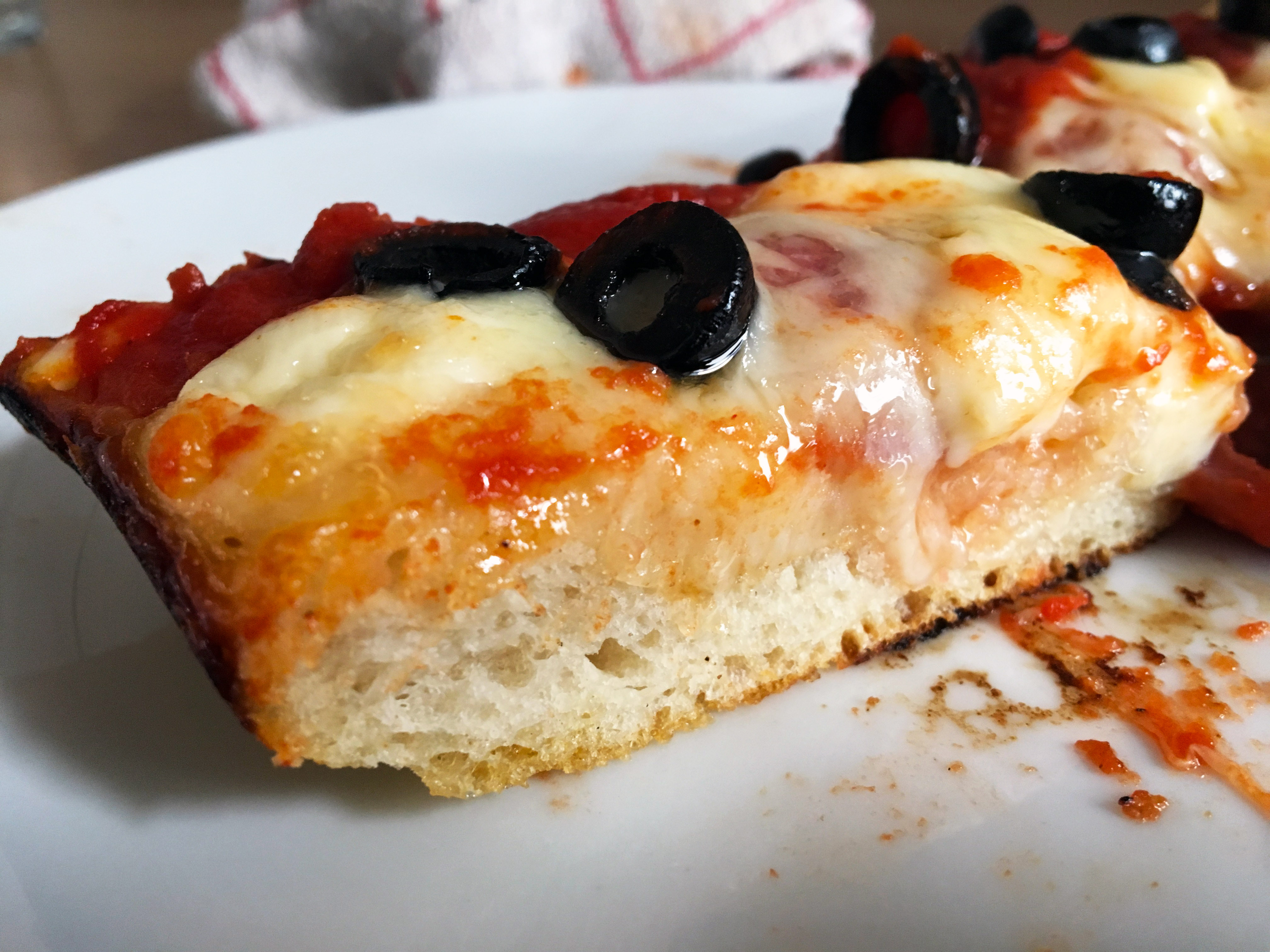
The Sauce
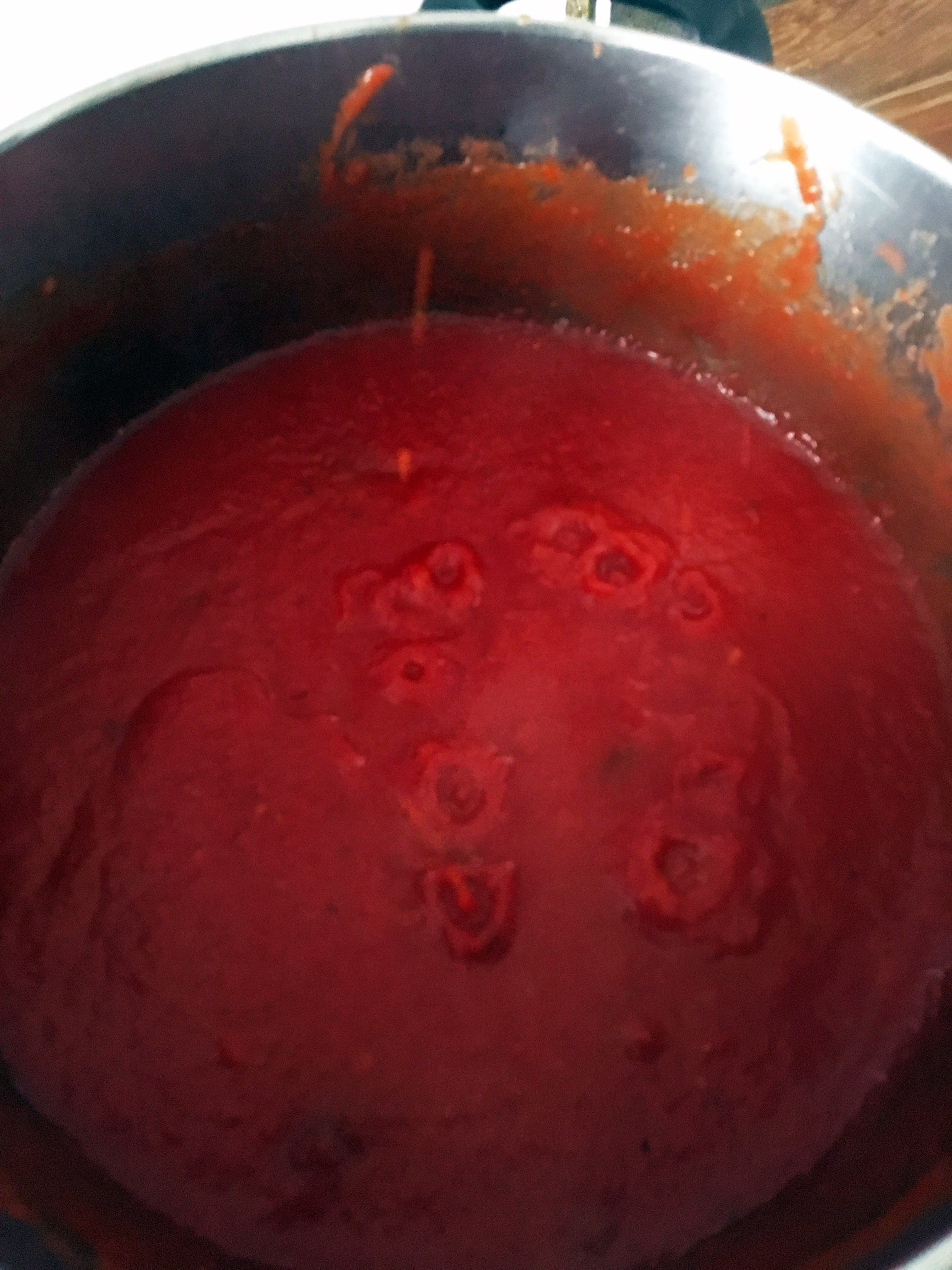
Compared to kneading your own dough, the sauce is pretty easy. I use 680ml (23 ounces) of San Marzano tomato puree (you can also use crushed tomatoes here). This is straight tomato with a little sodium added. That’s it. I mince two cloves of garlic and heat a little olive oil in a saucepan. I sweat off the garlic slowly and stir in the tomato puree. I add a heaping tablespoon of raw sugar and a teaspoon of sea salt and garlic powder. Next, I add a large pinch of red pepper flakes. You don’t want the sauce to be capital “S” spicy. You want it to have a mild bite to counterpoint the sugar.
I let that simmer for about 30-ish minutes. Lastly, I add in fresh-cut (and chopped) basil and oregano from the garden. I turn off the heat and put on the lid and let that rest while the dough rises. The fresh herbs will infuse into the sauce without breaking down.
The Toppings
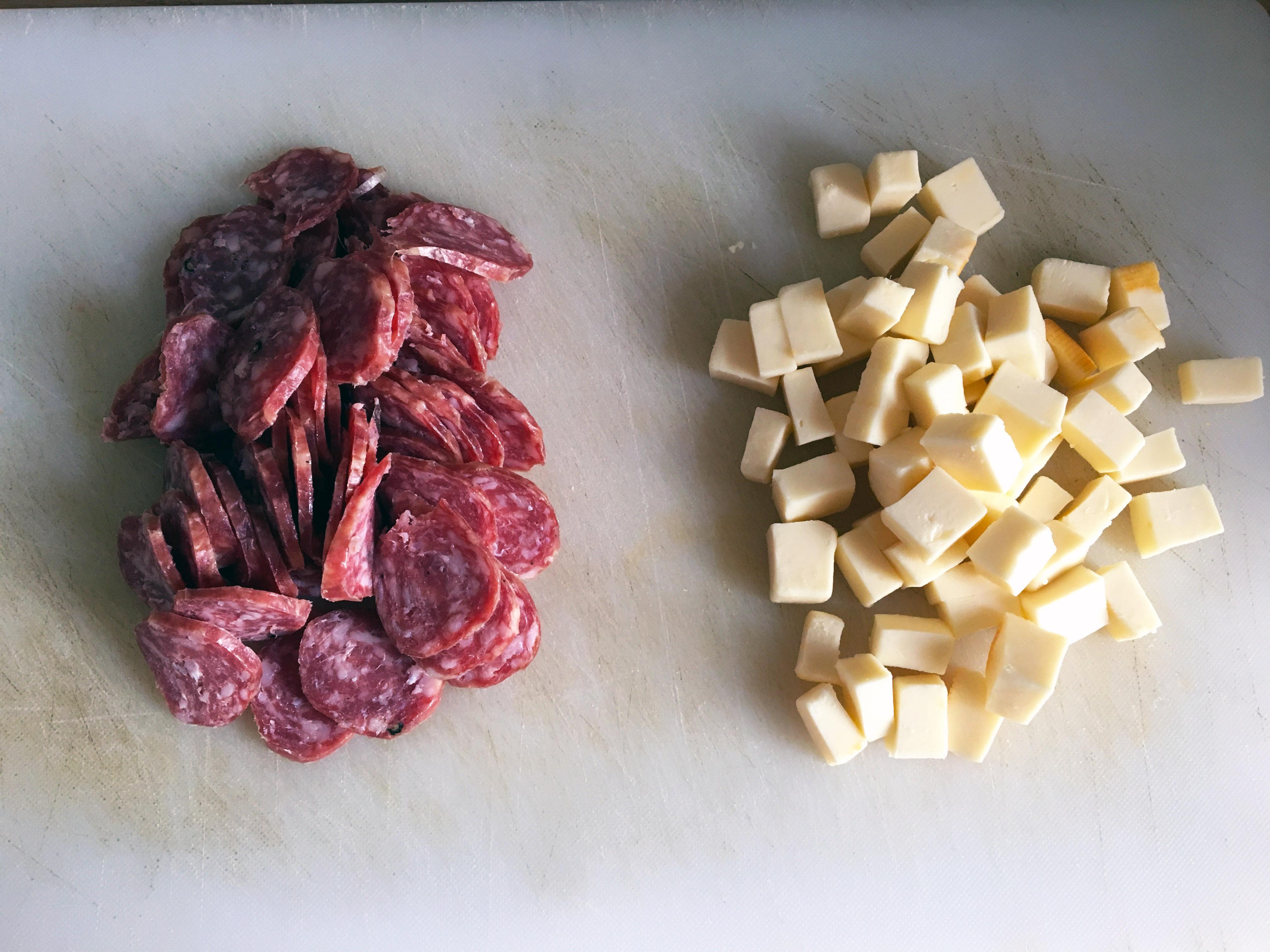
So, as mentioned above, I can’t get Wisconsin brick cheese here. But don’t cry for me, in Germany cheese is amazingly abundant and versatile. I cube the butter cheese. Next, I spend a little time slicing the Napoli salami into little discs. I can’t help but sample the cheese and salami together and it’s a delight. The mouthfeel of cellar funk and fattiness from the salami with the ultra creamy nuttiness of the cheese gets me kinda high.
I get the mozz ready and drain the olives. Basically, I’m ready to build a pie.
The Build
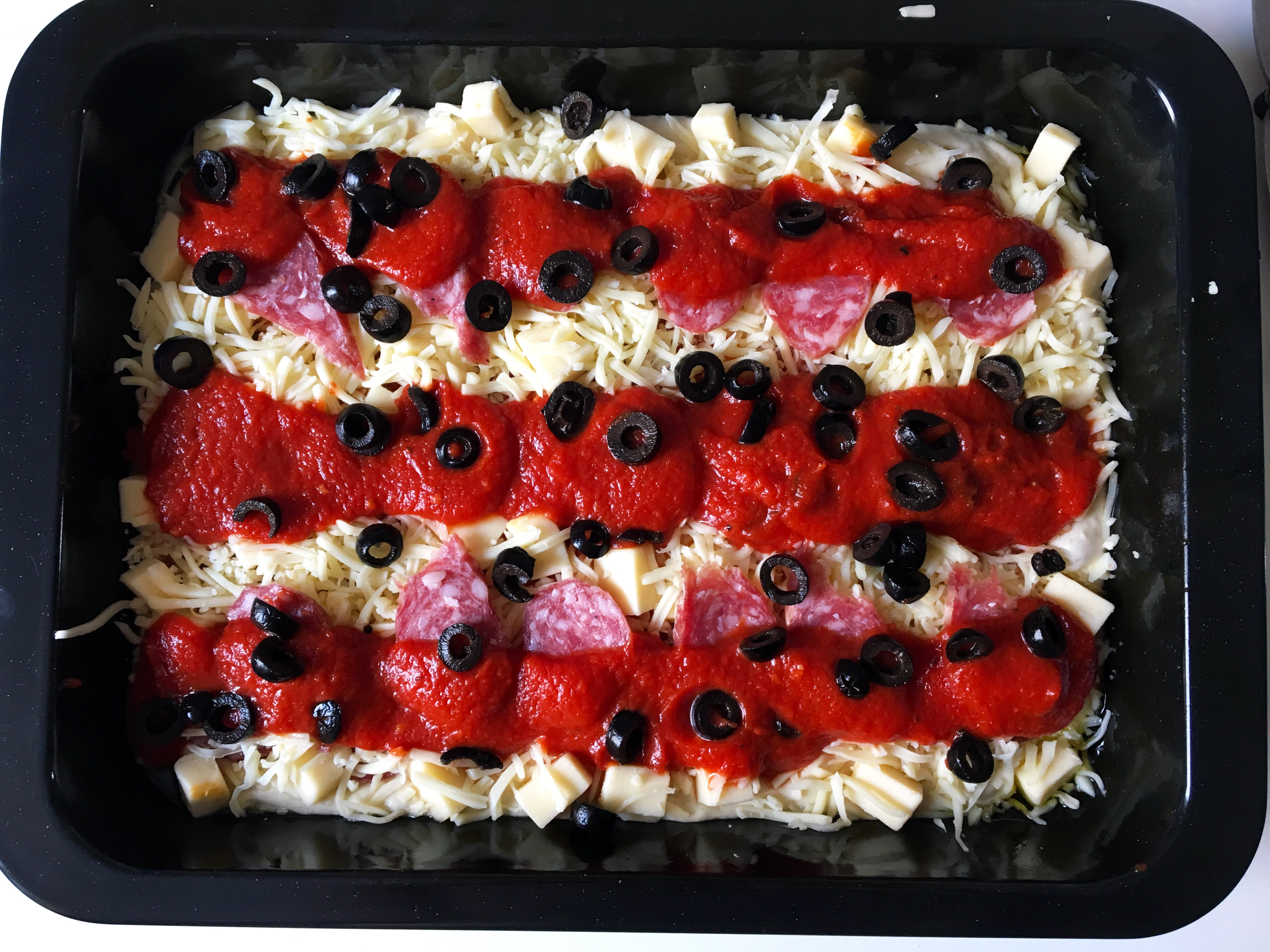
Before you start your build, turn your oven on it’s highest setting or 290C (555F). Put the baking rack on the lowest hinge as you need this pie to bake as close to the heat as possible. Sometimes you’ll see the baking pan on the bottom of the oven, sometimes not. It really depends on the power of the oven you’re working with.
So… here’s where construction comes in. Detroit-style is sometimes called “Upside Down” pizza since the toppings are reversed. The first thing I do is layer salami directly on the dough. I make four rows of six pieces so that each 1/4 slice will have six “bites” of salami.
Next, I pile on 200g (7 ounces) of mozzarella and 200g (7 ounces) of butter cheese. You have to make sure the cheese goes all the way to the edges. This is crucial. You need that cheese to melt down the side of the pan to create a crispy, fatty alliance with the dough.
Next, more salami goes on the pie. Then I add three rows of red sauce; one down the center of the pizza and one down each side in what will be the center of a slice. Lastly, I generously sprinkle on black olives and call it a day.
Pop the pizza into the preheated oven and set a timer for 12 minutes. I check in at six minutes and rotate the pan 180 degrees to even out the baking (but that’s only because I have an old gas oven).
Serve
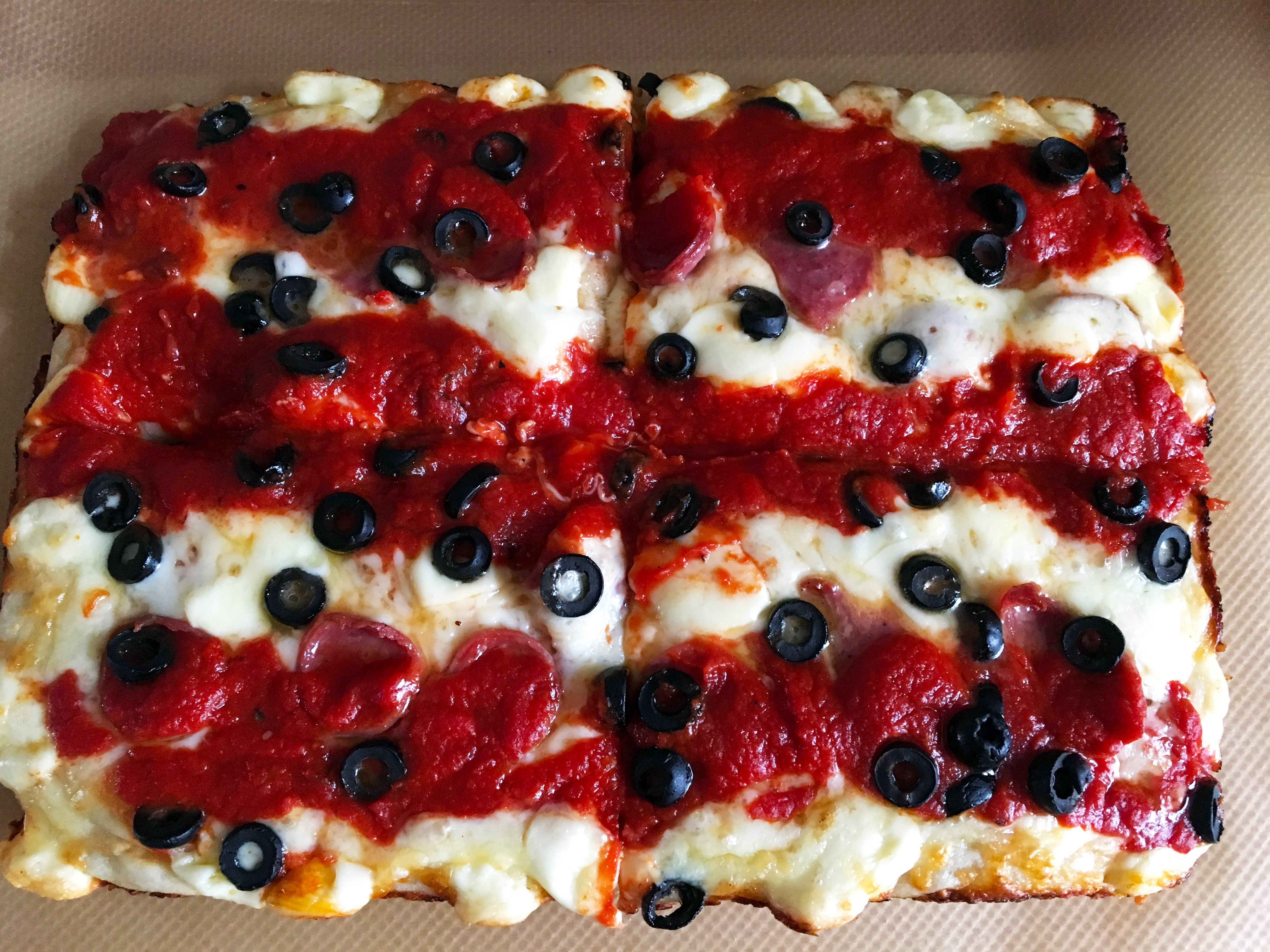
When the timer goes off, remove the pan. Let the pizza sit for two minutes. Use a large spatula to edge the pizza and work your way under the pie. The pizza should slip right out of the pan without any sticking whatsoever.
I pop the pizza onto a large piece of greaseproof paper for service. I use a large chef’s knife to slice four rectangular pieces. You can also cut the pizza further to create more bite-sized servings. It’s all good.
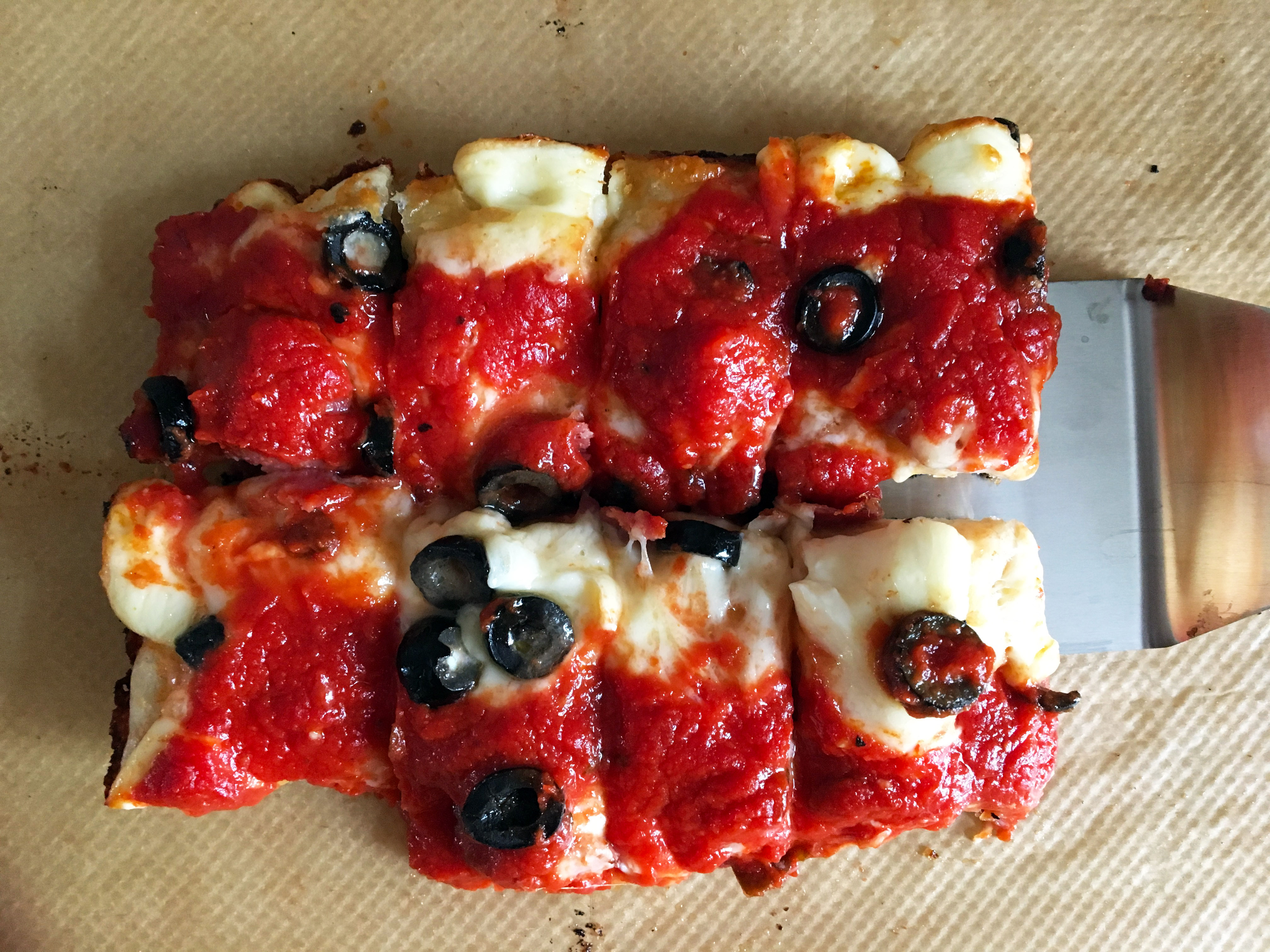
The pizza should have a very dark edge from the melted cheese and oil. The bottom will be medium brown and crisp. The inner dough will be so satisfying your eyes will close in a rush of delight. The melty cheese, funky meat, and sharp sauce meld into the perfect assembly of textures. Seriously, it’s bomb.
If you want, sprinkle a little more red pepper flakes or a nice dose of hard parmesan. Dig in!






